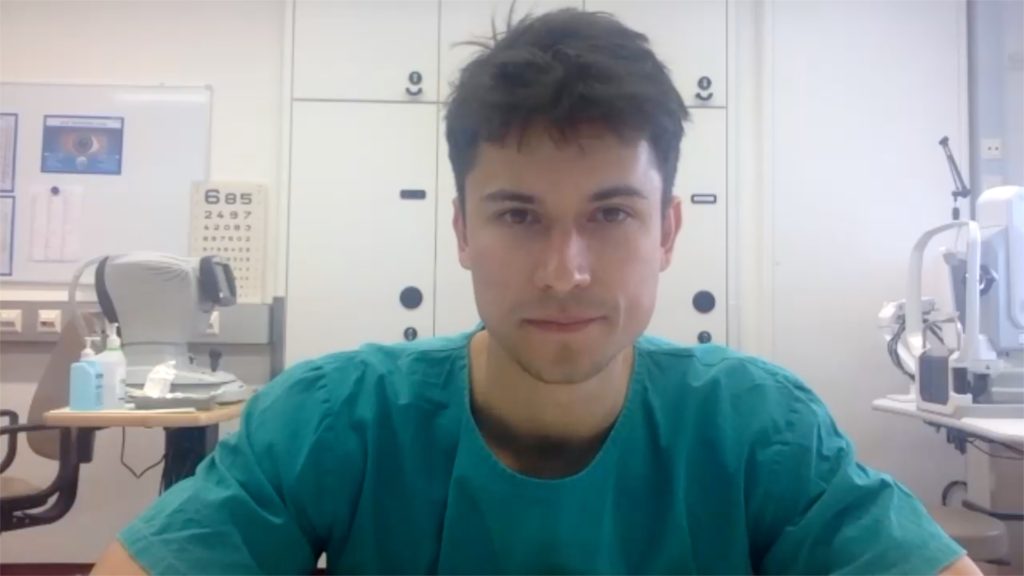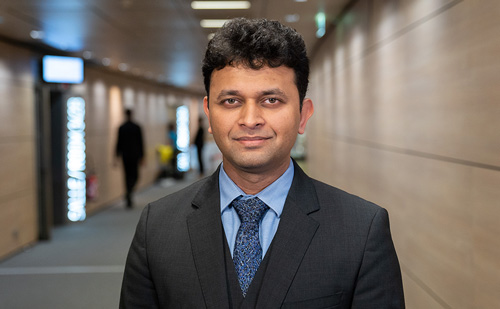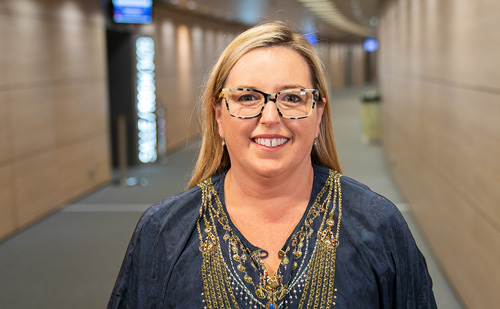Faricimab inhibits both angiopoietin-2 (Ang-2) and vascular endothelial growth factor (VEGF)-A pathways which may extend treatment durability beyond current anti-VEGF therapies for diabetic macular edema (DME). It was a pleasure to speak with Dr Jennifer Lim (University of Illinois Chicago, IL, USA) around the treat-and-extend regimen with faricimab in the YOSEMITE/RHINE (NCT03622580/NCT03622593) trials and the long-term potential of faricimab to reduce treatment burden for patients with DME.
The presentation entitled ‘Durable vision gains and greater fluid control with extended faricimab dosing vs aflibercept in patients with DME’ was presented at the Association for Research in Vision and Ophthalmology Annual Meeting, May 05-09, 2023
Questions:
- What is the rationale for using faricimab in the treatment of DME? (0:22)
- What were the primary and secondary endpoints and how well were they achieved? (1:09)
- What will be the likely clinical impact of these findings? (2:42)
Disclosures: Jennifer Lim is a consultant for Genentech, Regeneron, Opthea, Cognition, Viridian, Santen, Quark, Luxa, Aura, Alimera, Unity & Eyenuk and discloses grant/research support from Genentech, Regeneron, Aldeyra, NGM, , Adverum, Regenexbio, Janssen & Spring Vision.
Support: Interview and filming supported by Touch Medical Media Ltd. Interview conducted by Shanice Allen.
Filmed in coverage of the virtual ARVO 2023.
Click here for more content on DME
Transcript
I’m Jennifer Lim from the University of Illinois, where I serve as the Marion Schenck Chair in ophthalmology and Vice Chair of the department, as well as Director of the retina service. I’m also a UIC distinguished Professor of Ophthalmology, and it’s my pleasure to be here today.
What is the rationale for using faricimab in the treatment of DME?
Faricimab is the first bispecific antibody and it inhibits not only VEGF but also angiopoietin-2 and we know in diabetes that VEGF is not the sole cytokine. In fact, there are a lot of other cytokines and angiopoietin-2 is one of those cytokines that’s involved. We know that when angiopoietin-2 is present, it destabilizes the Tie2 receptor, basically knocking off Ang1 and potentiating not only the effects of VEGF, but in itself also leading to leakage and inflammation and in some cases fibrosis. So it’s a good idea to inhibit both the angiopoietin-2 and the VEGF systems.
What were the primary and secondary endpoints and how well were they achieved?
The primary endpoints for the faricimab studies basically YOSEMITE and RHINE was the mean change in visual acuity at weeks 48, 52 and 56. It was an average of those weeks. And as I said earlier, the mean endpoint was achieved with faricimab being non-inferior to aflibercept. Secondary endpoints included the change in the central subfield thickness at that same time point, visual acuity and CST change at two years, the presence or absence of intra retinal fluid and subretinal fluid also at year one and year two. There were several other secondary endpoints. Basically for these secondary endpoints faricimab performed very well compared to aflibercept. There was better drying overall with lower CSTs in comparison to aflibercept. Visual acuity at year 2 was also noninferior, just as it was in year one. There was also extended durability seen with a significant proportion of patients being able to hit Q12 about 72% and being able to hit Q16 approximately over 62% of the patients. Now of course, in the aflibercept arms, you couldn’t do this because those eyes were dosed on label Q8 weeks. Also, with regards to the drying effect, there were comparisons that were done, and it was found that the faricimab treated eyes had better drying compared to the aflibercept treated eyes.
What will be the likely clinical impact of these findings?
The impact of faricimab on the treatment of diabetic macular edema, I think will be pretty significant. We’re going to be able to achieve longer inter treatment intervals. That is, patients won’t have to come to the clinic is often after they’re loaded, and they are able to hit these extended dosing intervals. As a result, I think patients are going to have better quality of life and they’re going to have a lower impact for their family as well, because they won’t have to come as often. Then also because of the better drying effect, I’m hopeful that there are going to be significant proportions of patients who could never be dry, who now will achieve a drier retina, and also be able to achieve an improvement in visual acuity as well as a lower treatment burden.
Subtitles and transcript are autogenerated












